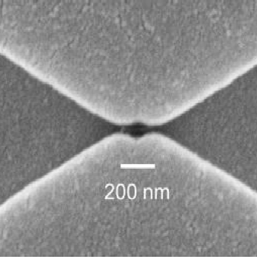Published/Posted: April 24, 2019
Authors: El Fatimy, A.; Han, P.; Quirk, N.; Marie, L. St.; Dejarld, M. T.; Myers Ward, R. L.; Daniels, K.; Pavunny, S.; Gaskill, D. K.; Aytac, Y.; Murphy, T. E.; Barbara, P.
DOI: 10.1016/j.carbon.2019.08.019
arXiv: 1905.03199
Abstract: At high phonon temperature, defect-mediated electron-phonon collisions (supercollisions) in graphene allow for larger energy transfer and faster cooling of hot electrons than the normal, momentum-conserving electron-phonon collisions. Disorder also affects the heat flow between electrons and phonons at very low phonon temperature, where the phonon wavelength exceeds the mean free path. In both cases, the cooling rate is predicted to exhibit a characteristic cubic power law dependence on the electron temperature, markedly different from the T4 dependence predicted for pristine graphene. The impact of defect-induced cooling on the performance of optoelectronic devices is still unclear. Here we study the cooling mechanism of hot-electron bolometers based on epitaxial graphene quantum dots where the defect density can be controlled with the fabrication process. The devices with high defect density exhibit the cubic power law. Defect-induced cooling yields a slower increase of the thermal conductance with increasing temperature, thereby greatly enhancing the device responsivity compared to devices with lower defect density and operating with normal-collision cooling.Citation:
A. El Fatimy, P. Han, N. Quirk, L. St. Marie, M. T. Dejarld, R. L. Myers-Ward, K. Daniels, S. Pavunny, D. K. Gaskill, Y. Aytac, T. E. Murphy and P. Barbara, "Effect of defect-induced cooling on graphene hot-electron bolometers", Carbon 154(497-502 (2019)
Export: BibTeX | RIS
Manuscript: ElFatimy_Carbon_154_497_2019.pdf
Supplemental Files:
